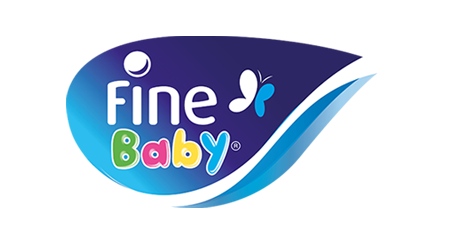Introduction To Liabilities Leave a comment
Content
When a debt becomes callable in the upcoming year , the debt is required to be classified as current, even if it is not expected to be called. If a particular creditor has the right to demand payment because of an existing violation of a provision or debt statement, then that debt should be classified as current also. In situations where a debt is not yet callable, but will be callable within the year if a violation is not corrected within a specified grace period, that debt should be considered current. The only conditions under which the debt would not be classified as current would be if it’s probable that the violation will be collected or waived.
A liability is a present obligation of a particular entity. Visit our IFRS Standards – Better communication in financial reporting page for more information on KPMG’s insights into making financial information more useful. Practice may change – e.g. convertible debt may become current – because companies may have interpreted the current requirements differently, online bookkeeping see the example . The existing requirement to ignore management’s intentions or expectations for settling a liability when determining its classification is unchanged. To promote consistency in application and clarify the requirements on determining if a liability is current or non-current, the International Accounting Standards Board has amended IAS 11.
Liabilities meaning in accounting also views liabilities as the claims made on the assets of the company. Another liabilities definition in accounting views liabilities as a business’s asset source. A product warranty is another example of contingent liability because the issuing company can only estimate how many products will be returned. Companies issue warranties to customers but customers rarely collect on them.
Liabilities And Your Balance Sheet
One is listed on a company’s balance sheet, and the other is listed on the company’s income statement. Expenses are the costs of a company’s operation, while liabilities are the obligations and debts a company owes. Expenses can be paid immediately with cash, or the payment could be delayed which would create a liability. Liabilities are categorized as current or non-current depending on their temporality. They statement of retained earnings can include a future service owed to others (short- or long-term borrowing from banks, individuals, or other entities) or a previous transaction that has created an unsettled obligation. The most common liabilities are usually the largest like accounts payable and bonds payable. Most companies will have these two line items on their balance sheet, as they are part of ongoing current and long-term operations.
- The current/short-term liabilities are separated from long-term/non-current liabilities on the balance sheet.
- To define liabilities, a company must account for all debts, current, and long-term, as well as monies received in advance in exchange for future transactions.
- IAS 37 Provisions, Contingent Liabilities and Contingent Assets outlines the accounting for provisions , together with contingent assets and contingent liabilities .
- Some loans are acquired to purchase new assets, like tools or vehicles that help a small business operate and grow.
- Long-term liabilities are those that will conclude in 12 months or more.
- PAX A920 Terminal Customer-facing terminals that are easy to use, EMV-ready, and chock-full of convenient functionality.
Speaking to a legal expert about your company’s financial needs will save you money in the long-term. Consider consulting with a business and commericial law attorney today to learn more. Notes payable and loans are money due to lenders within the next year.
Requirements for accruing a liability for sick leave or similar compensated absences is attributed to services already rendered and it is probable that payment will be made at termination. Therefore, sick leave benefits that have been earned but will only be used as sick leave should not be accrued. This liability also includes the employer’s share of social security and Medicare taxes as well as others.
There are many types of business liabilities, both current and noncurrent. Expenses can also be paid immediately with cash, while delaying payment would make the expense a liability. By subtracting your expenses from revenue, you can find your business’s net income. If you are a sole proprietor, you can find your owner’s equity by subtracting the liabilities from assets.
If your books are up to date, your assets should also equal the sum of your liabilities and equity. The expanded accounting equation https://www.123hp-com.com/what-is-the-formula-for-percentage-of-completion/ is derived from the accounting equation and illustrates the different components of stockholder equity in a company.
If it is expected to be settled in the short-term , then it is a current liability. Expenses fund your daily business operations and contribute to turning a profit. When you don’t pay off an expense immediately, https://thepeppercollective.com/5-reasons-to-use-an-outsourced-bookkeeping-service/ it then becomes a liability on the balance sheet. As a small business owner, there’s a good chance you’re wearing several hats at once. One day, you’re the marketer, and the next, you’re the accountant.
Noncurrent are those due in more than one year and typically include any long-term debts the business has. Most businesses will record current and noncurrent liabilities in two line items on their balance sheet as an account of ongoing business operations. Long-term liabilities consist of debts that have a due date greater than one year in the future. The most common long-term debts include bank notes andbonds.
Basic Accounting Equation
However, the payments on that loan due within the current year are short-term. Long-term liabilities are those that will conclude in 12 months or more.
Interest expenses that have already occurred but have not been paid. Interest payable should not be confused with the interest expenses.
What Is Assets In Accounting?
To keep track of debts, record liabilities on the right side of the balance sheet. You should continually make records ledger account as you incur new debt and pay existing debt. Short-term liabilities are also called current liabilities.
A better definition, however, is that current liabilities are liabilities that will be settled either by current assets or by the creation of other current liabilities. Taking a step back, liabilities are less about day-to-day spending and more about what your company owes. This includes any outstanding loans your business has or money that you owe to suppliers. Liabilities can also include wages you owe to your employees, among other things.
Although the amendments are not effective until 2023, companies will need to consider including IAS 84disclosures in their next annual financial statements. Therefore, companies may need to reassess the classification of liabilities that can be settled by the transfer of the company’s own equity instruments – e.g. convertible debt. Any changes could have a knock-on effect on covenant compliance. With potentially significant impacts ahead, companies are encouraged to take action now. These refer to any debts a business must pay within one year. Current liabilities are often loosely defined as liabilities that must be paid within one year.
Current liabilities are a company’s debts or obligations that are due to be paid to creditors within one year. The organization of accounts within the COA varies from company to company. It usually consists of the accounts that a company has identified and made available for recording transactions in itsgeneral ledger.
Accountingtools
The balance sheet is a financial statement that shows your assets, liabilities, and equity. The balance sheet reveals a snapshot of your finances that compares what your business owns to what it owes. Term DebtLong-term debt is the debt taken by the company that gets due or is payable after one year on the date of the balance sheet. It is recorded on the liabilities side of the company’s balance sheet as the non-current liability. Then, different types of liabilities are listed under each each categories. Accounts payable would be a line item under current liabilities while a mortgage payable would be listed under a long-term liabilities.
- The Liabilities section of the Balance Sheet reflects these debts and obligations.
- Unlike interest payable, interest expenses are expenses that have already been incurred and paid.
- A legal defeasance occurs when debt is legally satisfied on the basis of certain provisions in the debt instrument even though the debt is not actually paid.
- For a company this size, this is often used as operating capital for day-to-day operations rather than funding larger items, which would be better suited using long-term debt.
- They arise from purchase of inventory to be sold, purchase of office supplies and other assets, use of electricity, labor from employees, etc.
If you are pre-paid for performing work or a service, the work owed may also be construed as a liability. Depending on the timeline specifics, you may record deferred credits as non-current or current liabilities. These credits refer to revenue a business collects before recording the earnings on the income statement. Examples of this are customer advances, deferred revenue, or transactions where the business owes credit but it is not yet revenue. Once the business earns the revenue, it can reduce this line item by the amount earned. Then, it can transfer the amount to the business’s revenue stream. In a way, expenses are a subset of your liabilities but are used differently to track the financial health of your business.
From The Blog Are Expenses Liabilities? How To Tell The Difference
As the business begins to pay the money owed to the supplier or manufacturer, the accounts payable of the business will then decrease. When a business is liable, it means they are responsible for any money, goods, or services owed to another party. Businesses can use liabilities to finance operations, pay for expansions, and keep business-to-business transactions efficient. A business’ liabilities often include loans, accounts payable, mortgages, deferred revenues, bonds, warranties, and accrued expenses. While most are broken down by term length, some categories fall under current or non-current. Current liabilities – these liabilities are reasonably expected to be liquidated within a year. However, expenses decrease a business’s net worth, while liabilities have no effect on it.
The difference between the cash flows required to service the old debt and the cash flows required to service the new debt and complete the refunding. Revenue bonds are issued to acquire, purchase, construct, or improve major capital facilities. The revenue generated by the facility or the activity supporting the facility is pledged as security for the repayment of the debt. The accounting for debt-related transactions differs depending on whether the debt is related to proprietary and fiduciary funds or a governmental fund. Jamie Johnson is a Kansas City-based freelance writer who writes about finance and business. Jamie has written about a variety of B2B topics like finance, business funding options and accounting. She also writes about how businesses can grow through effective social media and email marketing strategies.
- For instance, one fund may make an advance to another fund, or one fund may provide services to another without payment at the time the services are provided.
- Less common non-current liabilities consist of things like deferred credits, post-employment benefits, and unamortized investment tax credits .
- Expenses are the costs of a company’s operation, while liabilities are the obligations and debts a company owes.
- You’ll also understand common liabilities for small businesses.
Non-Current liabilities are the obligations of a company that are supposed to be paid or settled on a long term basis generally more than a year. We’ll break them down into long-term and short-term liabilities.
A claimant must prove the debtorliable in a court of law, after which the claimant can collect on a debt or legal obligation. The debt-to-asset ratio is another solvency ratio, measuring the total debt (both long-term and short-term) relative to the total business assets. It tells you if you have enough assets to sell to pay off your debt, if necessary. Some advance refundings are intended to achieve short-term budgetary savings by extending debt service requirements further into the future. In these cases, total debt service requirements over the life of the new debt may be more or less than total service requirements over the life of the existing debt. Advance refundings undertaken for other reasons, such as to remove undesirable covenants of the old debt, may also result in higher or lower total debt service requirements. It may be necessary in an advance refunding to issue new debt in an amount greater than the old debt.
Accrued Liabilities
Bonds Payable – liabilities supported by a formal promise to pay a specified sum of money at a future date and pay periodic interests. A bond has a stated face value which is usually the final amount to be paid. Bonds can be traded in bond markets.For serial bonds , the portion which is to be paid within one year is considered as a current liability; the rest are non-current. The same rule applies to other long-term obligations paid in installments. Knowing the difference between your ongoing business expenses and your liabilities is crucial to effectively manage your company’s finances.
How We Make Money
Unlike interest payable, interest expenses are expenses that have already been incurred and paid. Therefore, interest expenses are reported on the income statement, while interest payable is recorded on the balance sheet. A chart of accounts usually lists balance retained earnings balance sheet sheet accounts first and then income statement accounts. Current assets include cash, accounts receivable, securities, inventory, prepaid expenses, and anything else that can be converted into cash within one year or during the normal course of business.







